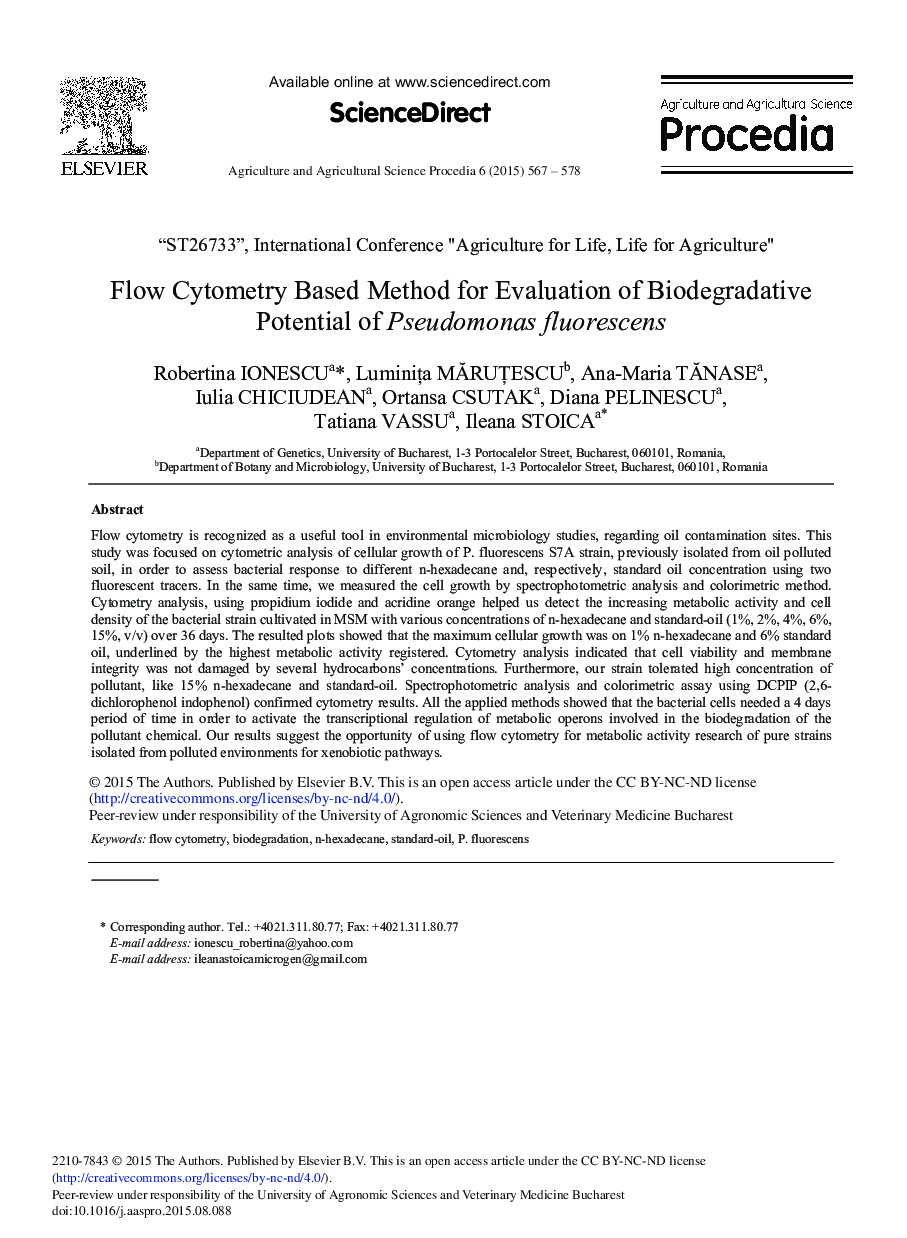| Article ID | Journal | Published Year | Pages | File Type |
|---|---|---|---|---|
| 4492482 | Agriculture and Agricultural Science Procedia | 2015 | 12 Pages |
Flow cytometry is recognized as a useful tool in environmental microbiology studies, regarding oil contamination sites. This study was focused on cytometric analysis of cellular growth of P. fluorescens S7A strain, previously isolated from oil polluted soil, in order to assess bacterial response to different n-hexadecane and, respectively, standard oil concentration using two fluorescent tracers. In the same time, we measured the cell growth by spectrophotometric analysis and colorimetric method. Cytometry analysis, using propidium iodide and acridine orange helped us detect the increasing metabolic activity and cell density of the bacterial strain cultivated in MSM with various concentrations of n-hexadecane and standard-oil (1%, 2%, 4%, 6%, 15%, v/v) over 36 days. The resulted plots showed that the maximum cellular growth was on 1% n-hexadecane and 6% standard oil, underlined by the highest metabolic activity registered. Cytometry analysis indicated that cell viability and membrane integrity was not damaged by several hydrocarbons’ concentrations. Furthermore, our strain tolerated high concentration of pollutant, like 15% n-hexadecane and standard-oil. Spectrophotometric analysis and colorimetric assay using DCPIP (2,6-dichlorophenol indophenol) confirmed cytometry results. All the applied methods showed that the bacterial cells needed a 4 days period of time in order to activate the transcriptional regulation of metabolic operons involved in the biodegradation of the pollutant chemical. Our results suggest the opportunity of using flow cytometry for metabolic activity research of pure strains isolated from polluted environments for xenobiotic pathways.
